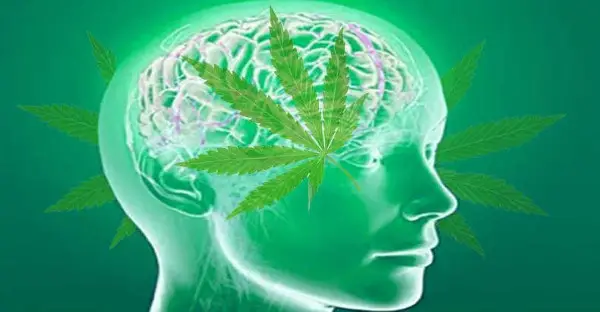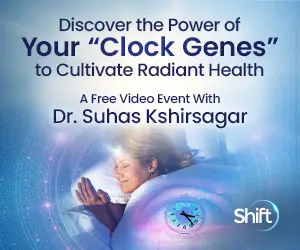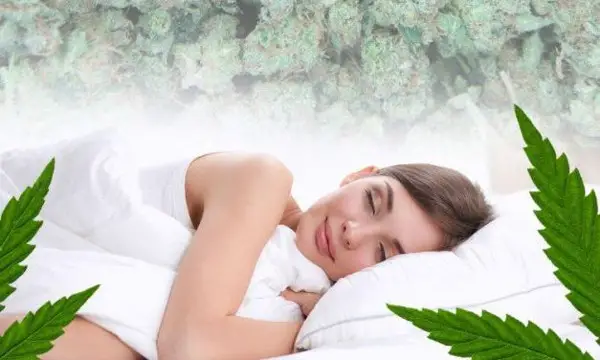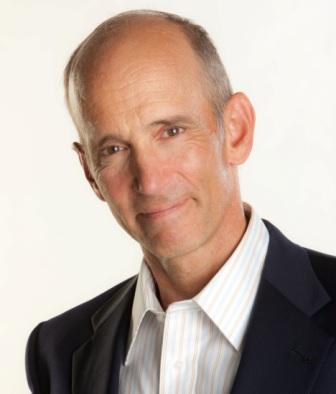Contributing writer for Wake Up World
Hemp has been outlawed in the U.S. since 1938. Thankfully, the latest Farm Bill signed into law at the end of 2018 makes it legal. In this interview, board-certified clinical nutritionist and expert on phytocannabinoids, Carl Germano, discusses the exciting implications of this change.
Now, there’s a difference between cannabidiol (CBD) products made from hemp and those made from marijuana. While many mistakenly believe hemp and marijuana are interchangeable, they’re actually two different plants.
“Both are considered Cannabis sativa by genus and species, but that’s where the similarity ends,” Germano explains. “Hemp has been cultivated for many reasons for the past few thousand years — food, clothing, fiber and fuel. The plant itself contains naturally occurring active compounds called phytocannabinoids, of which CBD is just one of them.
Marijuana, on the other hand, has been cultivated for its primary phytocannabinoid, tetrahydrocannabinol (THC). While it has recreational value at small levels, it does have medicinal value.
Nevertheless, many decades ago, hemp got dumped into the definition of marijuana. Hemp was unjustly placed into the Controlled Substances Act (CSA), which kind of hampered its access, its ability to have U.S. farmers grow it, or to have even medical or academic institutions study it.
We’ve been in the Dark Ages for decades. Thanks to Israel and Europe, who’ve championed all the research, we’ve [discovered] the cannabinoid system in the body called the Endocannabinoid System (ECS).Trump did sign a Farm Bill that finally deregulates hemp. It takes it out of the CSA … It gives the rights of farmers to grow it. It will open up the doors for academic and medical institutions to study it. It will give consumers access to [what is] probably the most important botanical we have on this planet.”
Why Whole Hemp May Be Better Than Isolated CBD
The hemp plant contains over 100 different phytocannabinoids, of which CBD is one. And while hemp has now been taken off the CSA, CBD is still under the jurisdiction of the U.S. Food and Drug Administration (FDA), which is responsible for the labeling of supplements and enforcing the Dietary Supplement Health and Education Act (DSHEA).
“With the passage of the Dietary Supplement Health and Education Act (DSHEA), you have several things against CBD. First, CBD was not in commerce prior to 1994, so it could not be grandfathered as a dietary supplement, yet hemp oil has been in commerce prior to 1994, so we’re OK there.
Secondly, DSHEA states that if you want to submit a new dietary ingredient application, you can do so and petition the FDA for an ingredient to be classified as a dietary supplement.
Well, if you were to do that today, you would get rejected immediately because the other part of DSHEA states that if Big Pharma takes a natural ingredient and makes a drug that gets approved, it’s hands-off to the dietary supplement industry.GW Pharmaceuticals has two drugs using isolated purified CBD in it. Therefore, we’ve got several strikes against putting CBD on the front panel, calling it a dietary supplement, and I say, why bother? Because the story is much bigger than CBD, both clinically, scientifically and legally.”
Hemp oil is a food that happens to have CBD in it. But while CBD may not be legally advertised on the label, CBD-containing hemp products can be labeled as having phytocannabinoids — the class of compounds to which CBD belongs. While CBD has gained the most attention, CBD alone cannot fully support your body’s endocannabinoid system (ECS). You need the other phytocannabinoids and terpenes, which are very complementary to the phytocannabinoids, as well.
“Those of us in botanical medicine understand that the sum of all the parts of the plant is greater than any one single ingredient,” Germano says. “Let’s face it. There’s more than one ginsenoside in ginseng. There’s more than one curcuminoid in curcumin. There’s more than one isobutylamide in Echinacea. There’s more than one ginkgolide in ginkgo.
Well, there’s more than just one phytocannabinoid in hemp. Back in 2011, Dr. Ethan Russo in the British Journal of Pharmacology1 … wrote about the entourage effect of all the phytocannabinoids and terpenes needing to be present to give rise to full clinical, meaningful benefit …
While CBD may be the most dominant phytocannabinoid in hemp, the others are there in minor in number, but they are not minor in the body as they all participate in nourishing, supporting the ECS, which is the bigger story.”
Understanding Your ECS
While the discovery of the ECS is fairly recent, genetically it dates back over 600 million years.2Cannabinoid receptors in the human body were discovered in the 1990s, which in turn led to the realization that we make compounds in our body — endogenous cannabinoids — that influence these receptors.
It was also discovered that the ECS orchestrates communication between other bodily systems, such as your respiratory, digestive, immune and cardiovascular systems. The ECS does this via receptors found in every organ, including your skin.
“Your ECS is like the conductor of the orchestra. The orchestra are our organ systems. We cannot be healthy, we cannot be well if our ECS does not function well,” Germano says.
“Your body produces cannabinoids similar structurally to the cannabinoids found in cannabis. Your body feeds off of them. If you don’t produce enough to feed every single receptor, various conditions and various illnesses will ensue.”
Two Types of Endocannabinoid Receptors Have Been Identified
There are two primary ECS receptors: cannabinoid receptor type 1 (CB1) and cannabinoid receptor type 2 (CB2). While CB1 is typically thought of as being primarily in the brain and CB2 primarily in the immune system, both types of receptors are in fact found throughout your body.
One of the two cannabinoids your body produces is called anandamide — a nod to the word “ananda,” the Sanskrit word for “bliss,” as it attaches to the same CB1 receptors that THC attaches to. The other, 2-arachidonoylglycerol (2-AG), is found throughout your body.
“The ECS has been the subject of many scholarly textbooks … Quite frankly, this is something that should be taught from high school to college to medical school. Unfortunately, because of the stigma attached to cannabinoids … less than 13 percent [of medical schools in the U.S.] are teaching the ECS.
I say, ‘Are you insane? This is like saying that for the next 70 years we will not teach the cardiovascular system, as if it never existed.’ We now have to dismantle this medical travesty … The whole thing is about education. This is critical and crucial to our health and well-being.
We have to dismantle the stigma, and we have to start educating ourselves to understand that the ECS is probably one of the most important medical discoveries in quite some time. Understanding the enormity of this system and what it does and what it influences throughout the entire human body.”
Low Endocannabinoid Levels Result in Ill Health
With age, our bodies tend to become less efficient in creating the compounds needed for optimal health, and this holds true for anandamide and 2-AG as well. According to Germano, these two cannabinoids can actually be used as biological markers for certain illnesses and conditions.
Endocannabinoid deficiency has been identified in people who have migraines, fibromyalgia, irritable bowel syndrome, inflammatory and neurological conditions and a variety of treatment-resistant conditions. Germano also cites a paper3 in Translational Psychiatry, which found low anandamide levels are a statistically positive indicator for stress-induced anxiety.
They’ve also discovered there’s an intimate relationship between your ECS and your omega-3 status.4As it turns out, omega-3 fats make your cannabinoid receptors more active, and are used as backbone structures to produce cannabinoids in your body.
“What do we see in people who have low omega-3 status? We see the same things we see in people who are endocannabinoid deficient: pain, inflammation, stress, anxiety, depression and so on. It is a perfect marriage between omega-3s and phytocannabinoids, which act like a multivitamin for the ECS.
But it doesn’t stop there. Look at bones … the reason we give post-menopausal women estrogen is because it influences the cells that build up bone, osteoblasts, and the cells that break down bone, osteoclasts. What does this have to do with the ECS?We now know that if you stimulate the CB1 receptors, you start to stimulate the brain-to-bone communication by slowing down the brain from releasing bone-breaking compounds, like norepinephrine. Then when you stimulate the CB2 receptors, it increases osteoblasts, the bone makers, and decreases osteoclasts, the bone breakers.”
Top conditions associated with low cannabinoid levels include:
- Pain, inflammation and inflammatory conditions
- Stress, anxiety and insomnia
- Ocular health
- Bone health
- Neurological conditions
“These are all conditions that can be suitably treated with phytocannabinoids,” Germano says. “These are conditions that we see in people who are endocannabinoid-deficient.”
Running Dramatically Boosts Anandamide Level
While runner’s high is typically attributed to the release of endorphins, running also dramatically increases anandamide in the body, and anandamide not only targets the CB1 receptor, but it also influences opioid and endorphin receptors. Not surprisingly then, the higher an individual’s anandamide level, the better they report feeling.
“That makes sense, because anandamide hits the receptors in the brain that are involved in reward and mood,” Germano says. “We also understand that the cannabinoids we produce are quite promiscuous.They certainly touch the CB1 and CB2 receptors, but they [affect] other receptors as well, [such as] the 5-hydroxytryptamine (5-HT3) receptors, peroxisome proliferator-activated receptors (PPAR), gamma-aminobutyric acid (GABA) receptors, and receptors that control inflammation, pain, reward, anxiety and things of that nature.”
A paper5 published in PLOS ONE also details how various nutrients (such as omega-3 fats), drugs, exercise, chiropractic care, massage and acupuncture influence the function of your ECS.
Your Endocannabinoid System — A Key Player in Inflammation
Curcumin, boswellia, fish oil and quercetin are all well-recognized anti-inflammatory nutrients, but none can compare to what cannabinoids can do, Germano says, especially when the full spectrum is used.
As noted in a 2014 paper6 in Current Opinions in Clinical Nutrition and Metabolic Care, the ECS is an emerging key player in inflammation, because it’s intertwined with all of the inflammatory pathways, including the eicosanoid ones that omega-3 fish oils influence.
Germano also cites other research showing that targeting the ECS can ease both inflammatory and neuropathic pain, and describe how cannabinoids act as analgesics. According to Germano:
“You cannot contend with any inflammatory condition unless you’re supporting the ECS. They can be used interchangeably; phytocannabinoids along with curcumin and boswellia and fish oils would be remarkable, as they are complementary to each other by doing different things.
Again, we must address the ECS in any inflammatory condition, whether it be irritable bowel syndrome or injuries — even inflammation in the brain, which is one of the hallmarks of all neurological diseases. In 2003, the United States government got issued a patent on the neuroprotective effects of cannabinoids.At that time, while the government has been telling us that phytocannabinoids are like lysergic acid diethylamide (LSD) and heroin — [meaning they] have no medical value — they go out and get a patent on the medical value.
But that was followed up, and there are many papers that talk all about the anti-inflammatory effects in the brain and in the nervous system, of these cannabinoids … There is nothing else like supporting the ECS with phytocannabinoids.”
Your Endocannabinoid System Also Plays a Key Role in Your Gut Health
You’re probably familiar with the fact that there’s a strong connection between not only your brain and your gut, but also your immune system. The importance of this triad in health and disease prevention cannot be overstated. Your gut not only is your largest immune organ, it’s also your second brain, containing hundreds of millions of neurons.
“We now understand how the gut is involved with communicating with the brain and the immune system, because it has brain cells and immune cells in it,” Germano says. In the middle of this trio is your ECS. It is actually the orchestrator of this tri-directional communication. According to Germano, researchers have also discovered the ECS controls:
- Motility in the gut
- Intestinal inflammation
- Abdominal pain
- Gut permeability
- Tolerance to antigens
The ECS also reduces the activity of the stress pathways, including the hypothalamic-pituitary-adrenal (HPA) pathways. Anandamide, specifically, participates in the immunological response in the gut. What’s more, there’s also communication occurring between your endocannabinoid system and your gut microbiome (the bacteria in your gut).
Clinical Applications for Hemp Products
Again, a full-spectrum oil is actually far preferable to product in which CBD has been isolated. Germano cites a 2015 Israeli paper, which compared full-spectrum oil against isolated CBD, and found the full-spectrum oil was in fact clinically superior.
As for dosing, most of the literature demonstrates efficacy of CBD in the several hundred milligram range — but that is for “single magic bullet” isolated CBD. Preclinical studies and any clinicians are reporting that efficacy can be achieved with much lower doses when using a ful spectrum oil — some in the 10 to 25mg CBD range.
“Since CBD is the most dominant cannabinoid in hemp, when you extract oil from hemp, you do have much, much higher levels of CBD naturally in the oil as compared to the rest of the phytocannabinoid family. Providing 10 to 25 mg of CBD is the sweet spot for most conditions in the trade — especially when used with other synergistic ingredients …
People are responding quite remarkably, which [suggests] you don’t need a lot to jump-start the body’s ECS. Quite frankly, when we look at the bell-shaped curve with the isolates, the higher the dose, sometimes you decrease the effectiveness … When you use a full-spectrum oil and you’re getting the other important phytocannabinoid and terpene components, this is superior, and I’ll tell you why.
People have been focusing on CBD, which is the wrong message. It’s the myopic message. Think about it, CBD does not attach to the CB1 or CB2 receptors. If anything, CBD supports the CB1 receptors by preventing the breakdown of anandamide in our bodies and anandamide hits the CB1 receptor.
What about the CB2 receptor that controls inflammatory cycling, pain signaling, insulin sensitivity and bone building? CBD does nothing for that, so we need something of a CB2 agonist. A perfect partner to CBD would be another phytocannabinoid called beta caryophyllene. Luckily, the family of other phytocannabinoids in a full-spectrum oil contains other phytocannabinoids that complement to what CBD is not doing as well.
We must get off this single magic bullet bandwagon. We must appreciate the full gamut of all these phytocannabinoids as a whole, and that they complement each other, because CBD is not the answer to support the ECS as a whole.”
As with most things, too much can backfire. While CBD cannot kill you, using CBD isolate in too high amounts can reduce its effectiveness. Such problems are far less likely when using a full-spectrum oil.
“I don’t foresee anybody really overdosing on the standard dosages that we’re recommending,” Germano says. “Nor when we look at the data that’s been published, up to 1,500 mg of CBD chronically administered over time show that it was well-tolerated, minimal to no adverse reactions on physiological function, psychological functioning and other parameters in the body, including blood pressure. So, CBD is quite well-tolerated in humans.”
Hemp Oil for Sleep
Aside from inflammation and pain, another area where a full-spectrum hemp oil can be beneficial is to improve sleep and treat insomnia. Germano recommends using a full-spectrum oil in a dose that provides 25 mg of CBD.
“CBD at that range does a number of things. No. 1, it reduces excitability in the brain. It can reduce glutamate toxicity and any excitatory conditioning. Secondly, CBD is involved in various neurotransmitters that are involved with a normal sleep cycle.
While it has a calming effect and helps to establish a normal sleep cycle, it’s not necessarily a sedative. You can use it with melatonin. You can use it with lavender. You can use it with chamomile and passionflower, what have you. I would do that towards the latter part of the day, at least an hour or two before bedtime. Lower doses of CBD are more stimulating, so to speak, and more upregulating.”
How the New Law Can Improve Quality of Hemp Products
In the past, prior to the signing of the new Farm Bill, the leaf, flower and bud of the hemp plant could not be used in the production of CBD-rich hemp oil. The oil had to be pulled from the stalk and stem of the plant only — the less concentrated part. With the new law, all parts of the plant can be used, which will make processing easier and more economical, as the cannabinoids are more concentrated in the leaves, flowers and buds.
The law also makes it legal to grow hemp in in every state, so if you wanted to, you could grow it in your backyard. This is something I’m definitely considering, as you can easily juice the whole plant or add it to smoothies.
“Growing it for yourself would be wonderful,” Germano says. “It is a weed. It has a short period of harvest. It grows very rapidly — July, August and September. Yes, the whole plant can be used rather than just extracting the oils from it. All the phytocannabinoids and lipids are found in the oils, but the leaf can be juiced and put into smoothies as well …
In terms of growing and processing it, it’s a rather easy plant to grow, because it is a weed. When we talk about the raw plant, a lot of these cannabinoids are in their acidic form. CBD is in CBDA, cannabidiol acid, form. To convert it to its useable form, the acid has to be decarboxylated.
So, while you may benefit from a lot of the phytocannabinoids [in the raw plant], it’s going to be reliant on your body’s ability to process it from the acidic forms that are in there. Exposure to heat, light, moisture and air will decarboxylate a lot of them as well. The more you process it yourself, the more useable some of those phytocannabinoids will be.
[To process it], you can take the leaf, flower and bud. You can blend it and store it in the refrigerator. Over a day or two of exposure to heat, air, light and moisture, it’ll decarboxylate to some extent and you’ll benefit more from that. How much do you get? Appreciable amounts of CBD may be difficult with just juicing alone …
I don’t want to misquote myself and say the wrong thing, but probably an ounce or two [of raw plant] would do the trick as a healthy plant beverage. Again, you don’t need a lot to jump-start your body’s ECS. It’s not a numbers game. Small doses, you would definitely respond to.”
How to Identify a High-Quality Hemp Product
If you’re not growing your own, attributes to look for when shopping for a hemp product include:
| Organic | Kosher-certified |
| Non-GMO | Verified pesticide and herbicide free |
| Full-spectrum phytocannabinoids | Grown from certified seeds and not hybrids with marijuana |
“I look for companies that are doing the right thing also. That is, they don’t mention CBD on the front panel or quantify it in the Supplement Fact box. Responsible companies talk about phytocannabinoids,” Germano says.
“They talk about hemp oil. They talk about nourishing the endocannabinoid system. This is a superior story to just CBD. Those are the more reputable companies that are telling the right story, [and not just talking about] isolated CBD.”
More Information About Endocannabinoid System
Germano has written a book about the endocannabinoid system called, “Road to Ananda: The Simple Guide to the Endocannabinoid System, Phytocannabinoids and Hemp,” (www.roadtoananda.com) which is due out shortly. I am very proud to have written the forward to this book as it is a great resource. Definitely pick up a copy if you want to learn more about this fascinating topic.
“I’m ecstatic to announce that the person who wrote the introduction to the book is Raphael Mechoulam, the father of cannabinoid research and who was involved in the discovery of the endocannabinoid system.
He is well-known in the scholarly circles. There are certainly plenty of scholarly work out there, but we need to get this message, this story, which is enormous, out to the layman and practitioner out there who is really unaware still,” Germano says.“I’ve been in this industry for over 35 years. I’m a clinical nutritionist by trade. I have not seen any natural compounds this clinically relevant since the inception of this industry. I can tell you that targeting the endocannabinoid system, supporting it, will dominate medicine and nutrition of the next couple of decades.There are also topical applications for phytocannabinoids, because, again, our skin is one of our largest organs. It also has five to 10 times more cannabinoids in it than we have in our brain. The CB1 and CB2 receptors are there as well.
There are three targeted areas for topical applications. One, obviously, is pain and inflammation, because the CB2 receptors are there that control that. That is something that will blow away any of these compounds in the marketplace today for topical pain relief.
Then we know that certain cannabinoids strangle the sebaceous gland for acne. Certain cannabinoids also influence age spot development and antiaging. [There are] some very interesting things going on in the topical application area.
When we look at the global picture of what is the subcutaneous endocannabinoid system doing, it’s helping to maintain normal cell proliferation, differentiation and immune competence. Oncologists are going to be interested in that aspect.”
Sources and References:
- 1 British Journal of Pharmacology 2011 Aug;163(7):1344-64
- 2 BMC September 22, 2005
- 3 Translational Psychiatry July 8, 2014 4, page e408
- 4, 5 PLOS One March 12, 2014
- 6 Current Opinions in Clinical Nutrition and Metabolic Care March 2014; 17(2): 130-138
Recommended articles by Dr. Joseph Mercola:
- Could a Root Canal Be the Cause of Your Chronic Health Problem?
- Top 5 Signs of Vitamin D Deficiency – and What You Can Do About It
- Statin Use Linked to Dementia
- Ninety Percent of Sea Salt Contains Plastic
- The Monsanto Papers – Secret Tactics and Corrupted Science
- Cancer, DNA Damage, Cellphones and 5G — What You Need to Know
- How LED Lighting May Compromise Your Health
- Magic Mushrooms May Hold Key to Long-Term Relief from Anxiety and Depression
- Scientific Links Between Processed Foods and Depression
- How Sugar Harms Your Brain Health and Drives Alzheimer’s Epidemic
- Glyphosate is Clearly Carcinogenic – and Monsanto Hid The Evidence
- The Many Medicinal Benefits of Cannabis and Cannabidiol (CBD)
About the author:
Born and raised in the inner city of Chicago, IL, Dr. Joseph Mercola is an osteopathic physician trained in both traditional and natural medicine. Board-certified in family medicine, Dr. Mercola served as the chairman of the family medicine department at St. Alexius Medical Center for five years, and in 2012 was granted fellowship status by the American College of Nutrition (ACN).
While in practice in the late 80s, Dr. Mercola realized the drugs he was prescribing to chronically ill patients were not working. By the early 90s, he began exploring the world of natural medicine, and soon changed the way he practiced medicine.
In 1997 Dr. Mercola founded Mercola.com, which is now routinely among the top 10 health sites on the internet. His passion is to transform the traditional medical paradigm in the United States. “The existing medical establishment is responsible for killing and permanently injuring millions of Americans… You want practical health solutions without the hype, and that’s what I offer.”
Visit Mercola.com for more information, or read Dr. Mercola’s full bio and resumé here.

If you've found value in our articles, we invite you to support the release of our brand-new book, "Gratitude Practices for Kids: A Practical Guide for Adults to Instill a Spirit of Appreciation and Positivity in the Next Generation."
"Gratitude Practices for Kids" brings together over 25 innovative and accessible practices designed to enhance gratitude in everyday life. This comprehensive guide is backed by 17 scientific studies, ensuring each concept is grounded in research, underscoring our commitment to nurturing growth, emotional intelligence, and positive interactions between adults and children.
We encourage you to opt for the paperback version to celebrate this new release. Dive into its fresh pages away from digital distractions, allowing you to immerse yourself in the transformative practices it offers.
Over recent years, Wake Up World has faced significant online censorship, which has impacted our financial ability to operate. Moving into book publishing represents a strategic step to secure the ongoing funds needed to continue our mission. By purchasing Gratitude for Kids, you help us keep our content free and accessible to everyone, avoiding needing a paywall. With over 8,500 articles published in the last 13 years, we remain dedicated to keeping our valuable content open to all.












